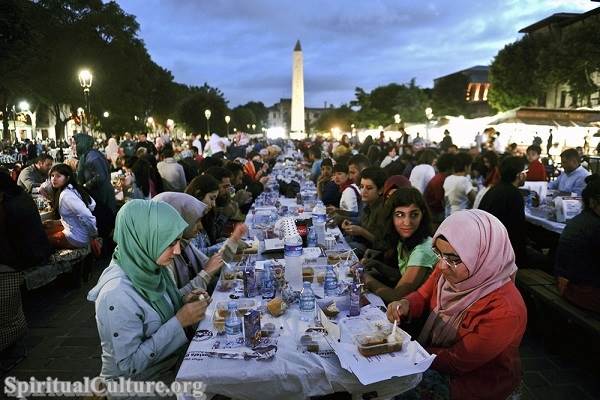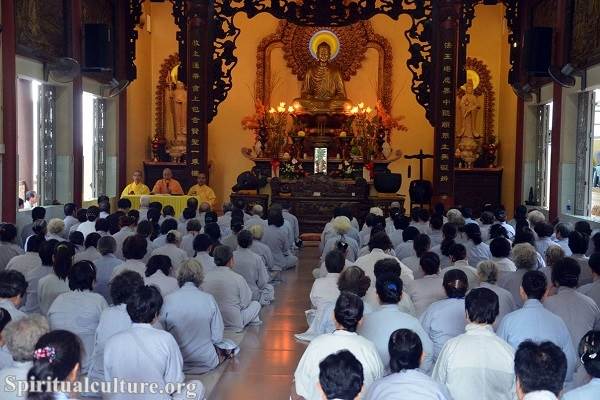Across continents and centuries, from ancient caves to modern temples, from whispered prayers to sacred chants that echo through mountains — humanity has always sought the divine. But why do we find this longing expressed in so many different ways? Why do we speak of God as Yahweh, Allah, Krishna, the Tao, or simply as Light or Love?
This question is not just intellectual — it touches something personal, something eternal. Whether we believe deeply, doubt sincerely, or seek silently, we all live under the same sky. This article will explore why different religions arose, what they share in common, and how their diversity reflects something profound about human nature, culture, and our shared spiritual journey.
As Spiritual Culture, we invite you to journey with us — not to judge or compare, but to understand. For in understanding the many, we may glimpse the One.
🌍 The Human Impulse Toward the Sacred
The Deepest Question of All
At the heart of every religion lies a question that haunts and heals: Why are we here? From the moment human beings could think symbolically, they began to ask this question — and in asking, they opened the door to the sacred. Religion, in its essence, is humanity’s attempt to answer life’s biggest questions: Who am I? What is right? What happens when we die? Is there something beyond this?
Different answers have emerged in different times and places, but the longing is the same.
“You have made us for Yourself, O Lord, and our hearts are restless until they rest in You.”
— St. Augustine, Confessions
The Birth of Religion in Human History
Anthropologists trace religious behavior to prehistoric rituals — burials with flowers, cave paintings of spirits, animal totems. These early signs show a universal spiritual instinct. As civilizations developed, so did structured religions: in Mesopotamia, Egypt, the Indus Valley, China, and Mesoamerica. The diversity of religious expression mirrors the diversity of human cultures, environments, and histories.
🕊️ The Sacred Expressed Through Culture
Religion Is Not Just a Belief — It’s a Worldview
Every religion arises in a cultural context. It speaks the language of the people, adopts their metaphors, reflects their environment. Hinduism’s sacred rivers, for instance, mirror the central role of the Ganges; Judaism’s laws reflect a desert people’s survival and covenant; Buddhism emerged in the forests of India, and its teachings echo the contemplative silence of a monk under a tree.
The Role of Language and Symbol
Words matter — and they divide. The same mystical experience might be called nirvana in Buddhism, moksha in Hinduism, salvation in Christianity, or submission to the will of God in Islam. Each carries rich meanings shaped by centuries of culture.
But beneath the words is something wordless — an encounter, a presence, a Light beyond name.
“Truth is one; the sages call it by many names.”
— Rig Veda 1.164.46
🌄 Why Differences Arise: Historical, Geographical, Spiritual
Geography and Isolation
Before global travel, most human communities were relatively isolated. This meant that spiritual traditions developed independently. The rainforests of the Amazon birthed shamanistic practices. The snowy steppes of Mongolia inspired animism. The Middle East, a crossroads of civilizations, gave rise to Judaism, Christianity, and Islam.
Each religion is a response to the particular questions and conditions of its people.
Founders and Prophets
Many religions began through the teachings of a particular person: Moses, Buddha, Jesus, Muhammad, Guru Nanak. Each of these figures interpreted divine truth in their own way, in their own context — and over time, followers formed communities that became faiths.
Each founder brought a different emphasis — law, compassion, wisdom, surrender — but their lives point upward, beyond themselves.
Revelation and Interpretation
Even when people agree on the idea of divine revelation, they often interpret it differently. That’s why even within religions, we find denominations and sects. Christianity has Protestants, Catholics, and Orthodox; Islam has Sunnis and Shi‘as; Buddhism has Theravāda, Mahāyāna, and Vajrayāna.
Religions are living — and like all living things, they grow, branch, and change.
🧭 Common Threads That Unite the Faiths
The Golden Rule Across Religions
Despite their differences, nearly every religion teaches some form of the Golden Rule:
- Christianity: “Do to others as you would have them do to you.” (Luke 6:31)
- Islam: “None of you truly believes until he wishes for his brother what he wishes for himself.” (Hadith)
- Judaism: “What is hateful to you, do not do to your neighbor.” (Talmud, Shabbat 31a)
- Hinduism: “This is the sum of duty: do not do to others what would cause pain if done to you.” (Mahabharata 5.1517)
- Buddhism: “Hurt not others in ways that you yourself would find hurtful.” (Udanavarga 5:18)
The presence of this teaching across religions suggests a shared human conscience — a divine echo within us all.
Ritual, Prayer, and Transcendence
Every religion creates space for sacred time and sacred space — through festivals, fasting, prayer, silence, pilgrimage. Whether one kneels before an altar, turns toward Mecca, lights a candle, or chants a mantra, these acts are ways of touching the Infinite.
The details differ, but the hunger is the same.
🌐 Religion, Pluralism, and Modern Life
The Challenge of Religious Diversity Today
In a globalized world, we no longer live in isolation. Our neighbors may follow a different faith. Our co-workers may believe in none. This diversity can lead to tension — or to deeper understanding.
Some see this as a threat to truth. But it may be an invitation to humility.
“Whoever draws near to God hears different languages, yet recognizes the same voice.”
— Spiritual Culture
Can All Religions Be True?
This is a deep and sensitive question. Some traditions claim exclusive truth — that theirs is the only way. Others offer a more inclusive vision. How can we honor differences while seeking truth?
Perhaps the better question is: What is each religion pointing to? Are they fingers pointing at the same moon — or at different stars altogether?
Spiritual Culture does not ask you to blur differences or deny convictions. Instead, we invite you to listen more deeply: What is this tradition trying to awaken in the soul?
✨ The Spiritual Meaning of Diversity
A Symphony, Not a Solo
Imagine the world as a great symphony. Each religion is a different instrument. Some are drums, others flutes; some are slow and solemn, others joyful and ecstatic. Together, they make a music that is richer than any one melody could achieve alone.
This doesn’t mean all religions are the same. But perhaps they are part of the same sacred composition.
God Beyond Our Imagination
If the Divine is infinite, then no single religion can exhaust the fullness of that mystery. The Tao Te Ching opens with these words:
“The Tao that can be spoken is not the eternal Tao.”
In the Jewish tradition, God’s name is so holy it is not spoken. In Islam, 99 names of God are revealed — and still God is greater. In Christianity, God becomes flesh, yet remains beyond understanding.
Each tradition gives us a glimpse. None holds the whole.
🕯️ Reflect and Reimagine
The presence of many religions in the world is not a mistake, but a mystery. It speaks to a humanity that is diverse in expression yet united in longing. It invites us to look beyond division, toward the deeper unity of the soul’s desire for the Divine.
So what does this mean for you?
It means your questions matter. Your journey matters. And you are not alone.
Whether you walk with a sacred text, a whispered prayer, or only an open heart — you are part of a great and ancient seeking. The many religions of the world are not barriers, but bridges — if we walk them with love, curiosity, and humility.
“God has made of one blood all nations of men to dwell on the face of the earth, and has set the times and places of their habitation, that they might seek Him — and find Him.”
— Acts 17:26–27
May you seek. May you find. And may you be found.
— Spiritual Culture


